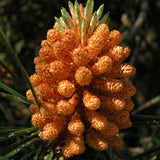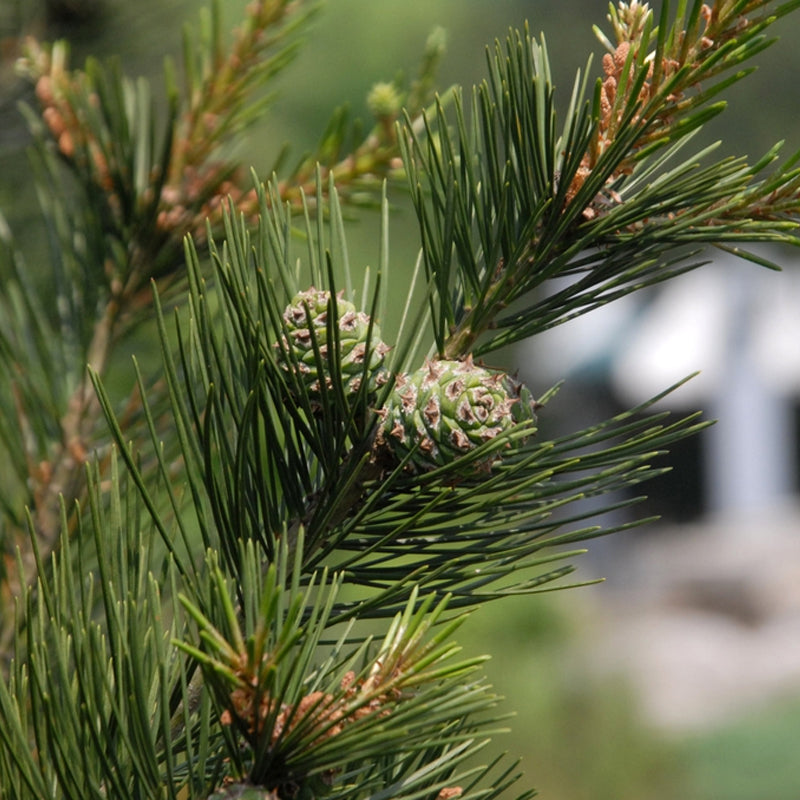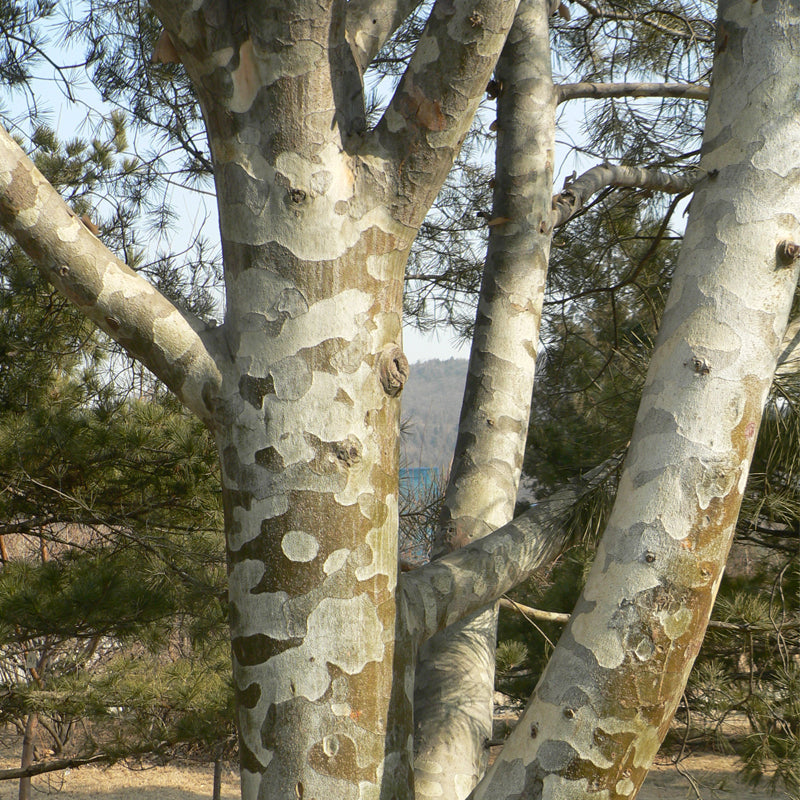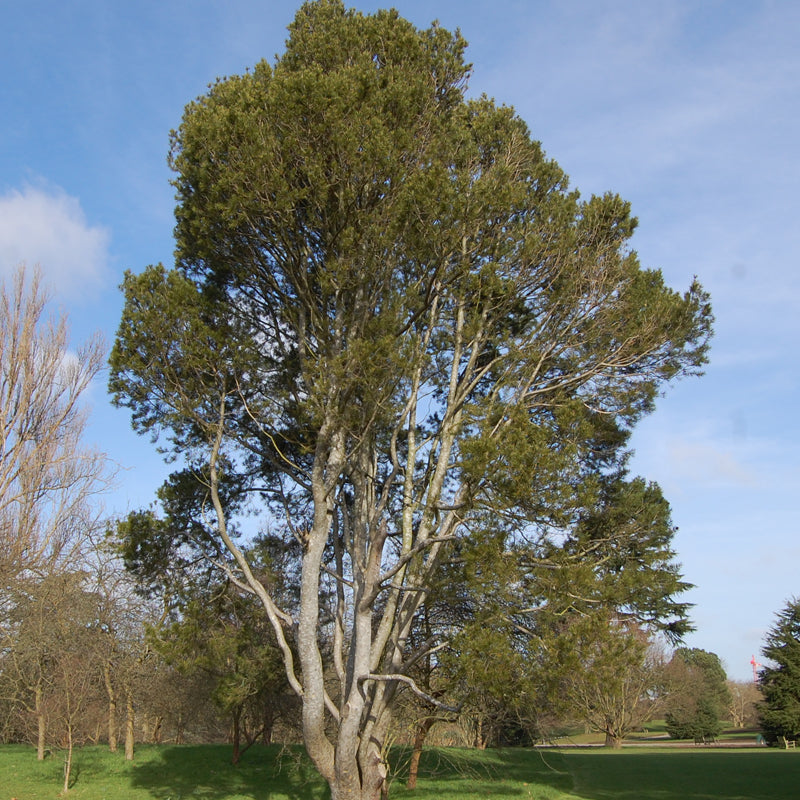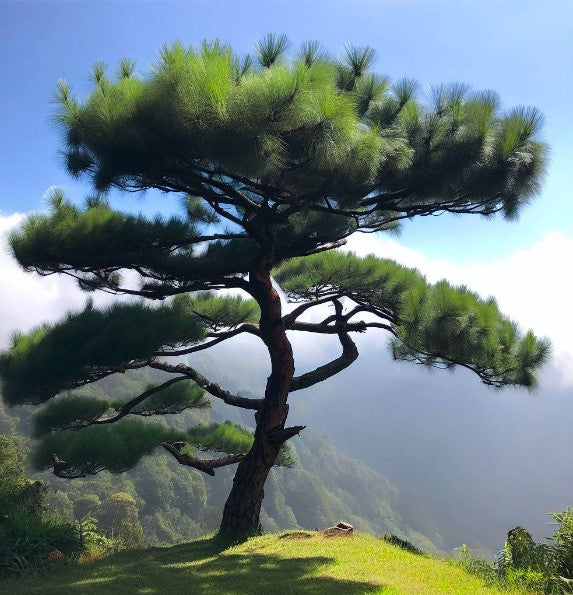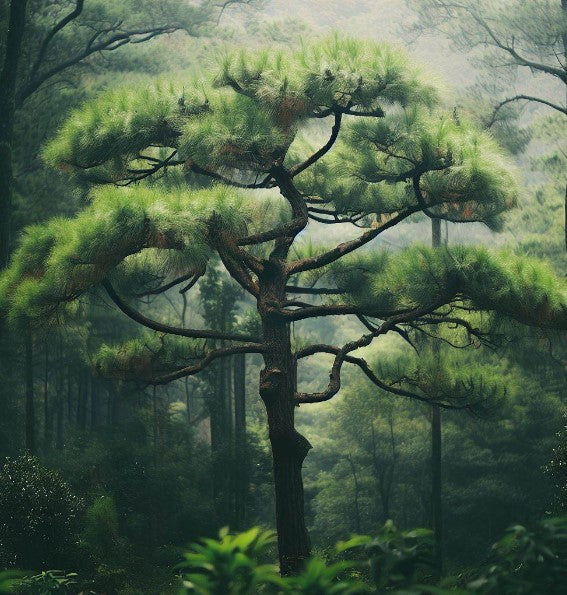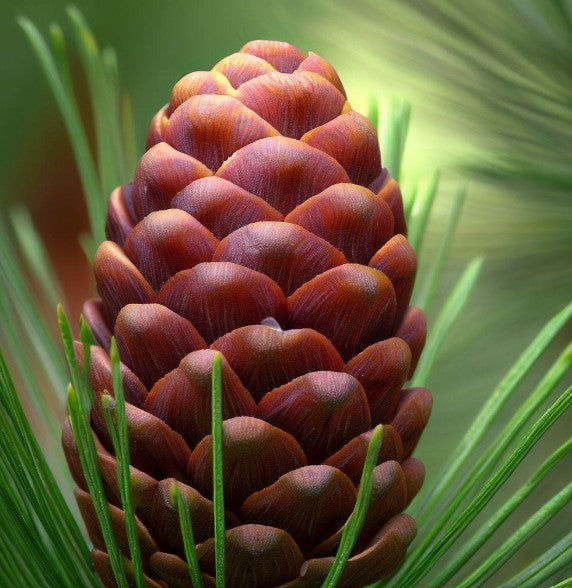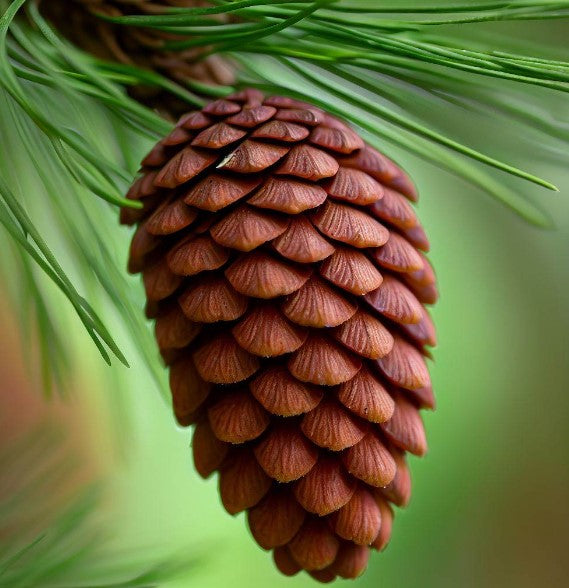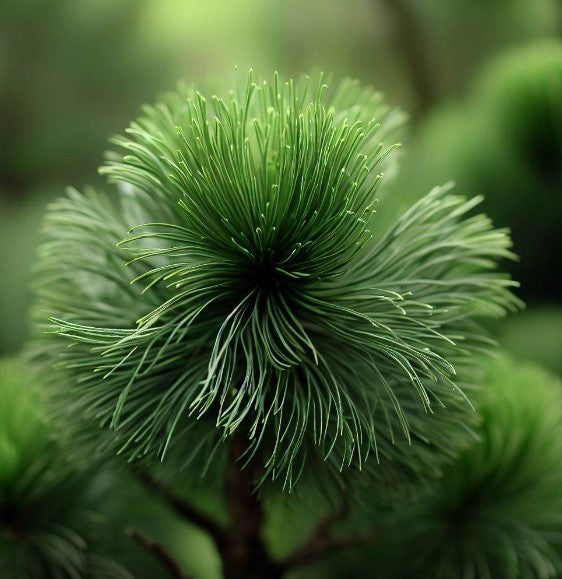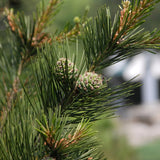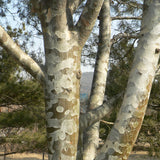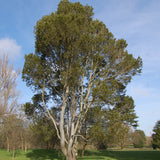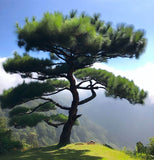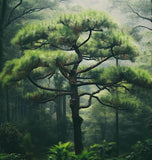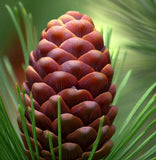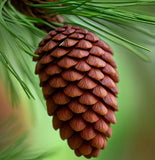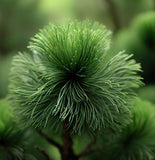Pinus bungeana (Bunge's Pine, Lace Bark Pine, White-Barked Pine)
Pinus bungeana (Bunge's Pine, Lace Bark Pine, White-Barked Pine) is a species of pine tree native to China. It is named after the Russian botanist Alexander von Bunge, who first described the species. Bunge's Pine is known for its distinctive exfoliating bark and attractive appearance.
Size and Growth Habit: Bunge's Pine is a medium-sized evergreen tree that typically reaches heights of 10-20 meters (33-65 feet), though some specimens can grow taller. It has a conical to irregular crown and a straight trunk. The branches are ascending and form a layered or tiered appearance.
Bark: The most striking feature of Pinus bungeana is its unique bark. The bark begins as a smooth, light gray or greenish color, gradually developing irregular patches of white. Over time, the white bark exfoliates and peels away, revealing the greenish bark underneath. This gives the tree a distinctive lacy or net-like pattern.
Needles: The needles of Bunge's Pine are typically arranged in bundles of three, though some trees may have bundles of two. They are slender, measuring about 5-10 cm (2-4 inches) in length, and are usually bluish-green in color. The needles persist on the tree for several years before shedding.
Cones: The cones of Pinus bungeana are small to medium-sized, typically ranging from 4-7 cm (1.6-2.8 inches) in length. They have rounded scales and are initially green, turning brown as they mature. The cones contain winged seeds that are dispersed by wind.
Habitat: Bunge's Pine is native to central and northern China, where it grows in various habitats including forests, slopes, and mountains. It is adaptable to different soil types, though it generally prefers well-drained soils. The tree can tolerate cold winters and hot summers.
Ornamental Use: Pinus bungeana is highly valued for its ornamental qualities. The unique white and green bark, along with its layered branching pattern, make it an attractive tree for landscaping and gardens. It is particularly appreciated for its winter interest when the white bark is most prominent.
Conservation Status: Pinus bungeana is not currently listed as a threatened or endangered species. However, like many tree species, it may face localized threats from habitat loss and degradation. Conservation efforts are important to protect and preserve the populations and habitats of Bunge's Pine.
Botanical Name : Pinus bungeana
Common Name : Bunge's Pine, Lace Bark Pine
Height : 80 ft
Spread : 40 ft
Germination Info : Seed does not require a pre-treatment
Hardiness zone : 5-8
Average seed per ounce : Approx. 188

